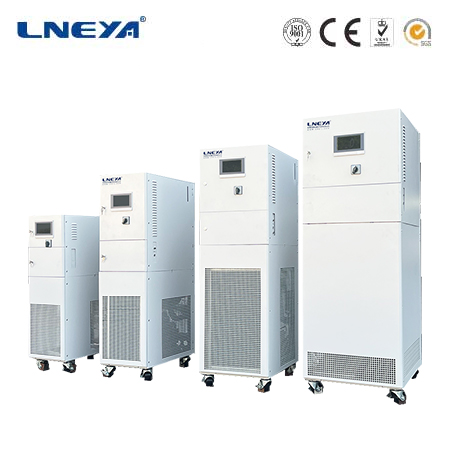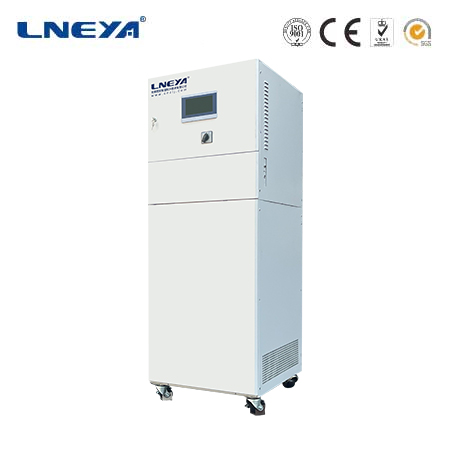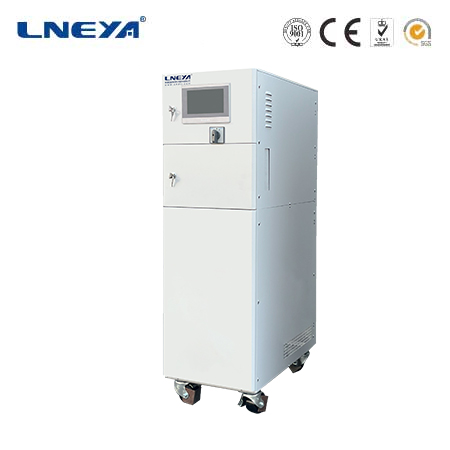small heating and cooling units
Small Heating and Cooling Units: A Complete Guide
In modern living and working environments, the demand for compact and efficient thermal management solutions has grown significantly. Small heating and cooling units offer tailored temperature control for spaces where traditional large – scale HVAC systems may be unnecessary or impractical. Whether it’s a single room in a house, a small office, or a specialized enclosure, these units play a vital role in maintaining comfort and functionality. This comprehensive article will explore the various types, working principles, applications, selection factors, and maintenance aspects of small heating and cooling units.

Types of Small Heating and Cooling Units
Ductless Mini – Split Systems
Design and Components
Ductless mini – split systems consist of two main parts: an outdoor compressor unit and one or more indoor air – handling units. The outdoor unit houses the compressor, condenser, and fan, while the indoor units contain the evaporator coil, blower, and control electronics. These units are connected by refrigerant lines and electrical cables, allowing for flexible installation without the need for extensive ductwork.
Operation
In cooling mode, the refrigerant in the outdoor compressor is compressed, increasing its temperature and pressure. It then flows to the indoor evaporator coil, where it absorbs heat from the room air as it evaporates. The cooled air is blown back into the room by the indoor unit’s fan. In heating mode, the process is reversed, with the outdoor unit acting as an evaporator to extract heat from the outside air (even in cold temperatures) and the indoor unit releasing the heat indoors.
Advantages
Zoned Comfort: Each indoor unit can be independently controlled, enabling users to adjust the temperature of different rooms or zones according to individual preferences. This feature is especially useful in multi – room buildings, reducing overall energy consumption by only heating or cooling occupied areas.
Easy Installation: Without the requirement for ductwork, installation is relatively quick and less invasive. This makes ductless mini – split systems suitable for retrofitting existing buildings that lack a central HVAC system.
Energy Efficiency: Many modern models come with high – efficiency ratings, such as a Seasonal Energy Efficiency Ratio (SEER) of 20 or more for cooling and a Heating Seasonal Performance Factor (HSPF) of 10 or higher for heating. Variable – speed compressors in some units further optimize energy use by adjusting the cooling or heating output based on the actual load.
Window Air Conditioners
Structure and Function
Window air conditioners are self – contained units designed to fit into a standard window frame. They combine all the necessary components for the refrigeration cycle, including a compressor, condenser, evaporator, and fan, within a single housing. The front part of the unit contains the evaporator and fan, which cool and circulate the indoor air, while the rear part houses the condenser and fan that release heat to the outside.
Working Process
When in operation, the compressor compresses the refrigerant, sending it to the condenser where it releases heat to the outdoor environment. The condensed refrigerant then passes through an expansion valve, reducing its pressure and temperature. It enters the evaporator, where it absorbs heat from the indoor air, cooling it down. The cooled air is blown back into the room, and the cycle repeats.
Benefits and Limitations
Cost – Effective: Window air conditioners are generally more affordable compared to other small cooling units, both in terms of upfront purchase price and installation costs, as they require minimal setup.
Portability: They can be easily moved between windows or rooms, making them a convenient option for temporary cooling needs or for renters who may need to relocate frequently.
Limited Capacity and Coverage: These units are typically designed for cooling a single room, usually with an area of up to 500 – 600 square feet. They may not be sufficient for larger spaces, and their cooling performance can be affected by factors such as direct sunlight on the window or poor insulation.

Electric Space Heaters
Heating Mechanisms
There are several types of electric space heaters, each with its own heating principle.
Convection Heaters: These heaters work by heating the air directly. Electric coils or heating elements warm the surrounding air, which then rises due to its lower density, creating a convection current that circulates the heated air throughout the room.
Radiant Heaters: Radiant heaters emit infrared radiation, which directly heats objects and people in the room rather than heating the air. This provides instant warmth, similar to the heat from the sun, and is effective for spot – heating specific areas.
Fan – Forced Heaters: Combining the principles of convection and forced air, fan – forced heaters use a fan to blow air over the heating elements, accelerating the heat – distribution process and warming up the room more quickly.
Features and Considerations
Compact and Portable: Electric space heaters are usually small in size and lightweight, allowing for easy placement and movement within a room or between different locations.
Quick Heat – Up: They can provide immediate warmth, making them a practical choice for supplementing heating in cold spots or for short – term heating needs.
Energy Consumption: While they are convenient, electric space heaters can consume a significant amount of electricity, especially if used continuously for long periods. It’s important to choose models with energy – saving features, such as programmable thermostats and timer functions, to manage energy use.
Portable Air Conditioners
Design and Operation
Portable air conditioners are self – contained units on wheels, making them highly mobile. They have an integrated compressor, condenser, evaporator, and fan, along with a flexible exhaust hose that needs to be vented through a window or wall opening. In operation, similar to other air – conditioning systems, the refrigerant cycle cools the indoor air, and the heat is expelled outside through the exhaust hose.
Applications and Drawbacks
Versatile Use: Ideal for spaces where permanent installation of a cooling unit is not possible, such as rented apartments, temporary offices, or rooms undergoing renovation. They can be moved from one room to another as needed.
Exhaust Requirement: The need for proper exhaust venting can be a limitation. If not vented correctly, the unit’s cooling performance may be compromised, and it can also cause humidity issues in the room. Additionally, the exhaust hose can be cumbersome and may restrict the unit’s placement options.
Working Principles of Small Heating and Cooling Units
Refrigeration Cycle in Cooling Units
As seen in ductless mini – splits, window air conditioners, and portable air conditioners, the refrigeration cycle is the core of their cooling operation. It involves four main stages:
Compression: The compressor increases the pressure and temperature of the refrigerant vapor, converting it into a high – pressure, high – temperature state.
Condensation: The high – pressure refrigerant vapor enters the condenser, where it releases heat to the surrounding environment (either outdoor air in air – cooled units or a cooling medium in other setups) and condenses into a liquid.
Expansion: The high – pressure liquid refrigerant passes through an expansion valve, which reduces its pressure and causes it to cool down significantly.
Evaporation: The low – pressure, low – temperature refrigerant enters the evaporator, where it absorbs heat from the indoor air or the space to be cooled, evaporating back into a vapor. This cycle repeats continuously to maintain the desired cooling effect.

Heating Principles in Small Heaters
For electric space heaters, the heating process is based on different electrical principles:
Resistance Heating: In convection and fan – forced heaters, electric current passes through a resistive heating element, such as a nichrome wire. According to Joule’s law, the electrical resistance of the wire converts electrical energy into heat energy, warming the air or objects in the vicinity.
Infrared Radiation: Radiant heaters use infrared – emitting elements, such as quartz tubes or ceramic plates. These elements emit infrared rays, which are absorbed by objects and people in the room, directly raising their temperature without significantly heating the air in between.
Applications of Small Heating and Cooling Units
Residential Use
Single – Room Comfort: In homes, small heating and cooling units are commonly used to regulate the temperature of individual rooms. For example, a ductless mini – split system can be installed in a master bedroom to provide personalized comfort, independent of the central heating or cooling system. Window air conditioners are a popular choice for cooling guest rooms or home offices during the summer months.
Energy – Saving Zoning: By using small units to heat or cool only the occupied rooms, homeowners can avoid wasting energy on heating or cooling unoccupied areas. This is especially beneficial in larger houses with multiple floors or in older homes where central HVAC systems may be less efficient.
Commercial Settings
Small Offices and Retail Stores: In small commercial spaces, such as local businesses, start – up offices, or small retail stores, small heating and cooling units offer an affordable and efficient solution. A ductless mini – split system can be installed to maintain a comfortable environment for employees and customers, while electric space heaters can be used to supplement heating in cold areas during the winter.
Server Rooms and IT Closets: These spaces often generate a significant amount of heat due to the operation of servers, routers, and other electronic equipment. Small cooling units, such as portable air conditioners or specialized in – rack cooling systems, are essential for preventing overheating and ensuring the reliable operation of the IT infrastructure.
Specialized Environments
Greenhouses and Grow Rooms: For hobbyists or commercial growers, maintaining the right temperature and humidity levels in greenhouses and grow rooms is crucial for plant growth. Small heating and cooling units can be used to create a controlled environment, protecting plants from extreme temperatures and promoting optimal growth conditions.
Workshops and Garages: In spaces like workshops and garages, where traditional HVAC systems may not be practical, small units provide a means of temperature control. Electric space heaters can keep the area warm during winter months, allowing for comfortable working conditions, while window air conditioners or portable units can offer relief from heat in the summer.
Selection Criteria for Small Heating and Cooling Units
Capacity Calculation
Heating Capacity: When choosing a small heater, it’s important to calculate the required heating capacity based on the size of the room, insulation quality, number of windows, and local climate. As a general rule, for well – insulated rooms, approximately 10 watts of heating power per square foot is sufficient. However, in colder climates or poorly insulated spaces, more power may be needed.
Cooling Capacity: For cooling units, the capacity is measured in British Thermal Units (BTUs). To determine the appropriate BTU rating, factors such as room size, ceiling height, number of occupants, and the presence of heat – generating appliances need to be considered. A room with a lot of sunlight exposure or electronic devices will require a higher – capacity unit. As a rough estimate, a 100 – square – foot room may need a 5,000 – BTU air conditioner, but this can vary depending on the above – mentioned factors.
Energy – Efficiency Ratings
Heating Units: For electric space heaters, look for models with Energy Star certification or high – efficiency ratings. Energy Star – rated heaters are designed to use less energy while providing the same level of warmth. Some heaters also come with features like programmable thermostats and automatic shut – off functions, which help further optimize energy consumption.
Cooling Units: Cooling units, such as ductless mini – splits and air conditioners, are rated by their SEER (for cooling) and HSPF (for heating in reversible units). A higher SEER or HSPF value indicates better energy efficiency, meaning the unit will consume less electricity to produce the same amount of cooling or heating, resulting in lower long – term operating costs.
Noise Levels
Indoor Environment: In living and working spaces, noise can be a significant factor. When selecting a small heating or cooling unit, especially for bedrooms, offices, or other quiet areas, consider the unit’s noise output. Ductless mini – split systems are generally quieter than window air conditioners and portable units. Look for models with noise – reduction features, such as insulated compressor enclosures and quieter fan motors.
Installation Requirements
Ease of Setup: Depending on the type of unit and the installation location, the complexity of installation can vary. Ductless mini – split systems may require professional installation for proper refrigerant line connection and electrical wiring, while window air conditioners and portable units can often be installed by the user with basic tools. Consider your own DIY skills and the availability of professional installers when choosing a unit.
Maintenance of Small Heating and Cooling Units
Regular Cleaning
Cooling Units: For air – conditioning units, clean the air filters regularly to prevent dust and debris from clogging the system. A dirty filter can reduce the unit’s efficiency and cooling performance. In ductless mini – splits, the indoor units’ filters can usually be removed and washed with water. Window air conditioners and portable units also have filters that need periodic cleaning. Additionally, clean the condenser coils (on the outdoor unit of ductless mini – splits or the rear part of window/portable units) to ensure proper heat transfer.
Heating Units: Electric space heaters should be kept clean to prevent the accumulation of dust, which can be a fire hazard. Wipe the exterior of the heater with a dry cloth regularly. For models with built – in fans, clean the fan blades to ensure smooth operation and efficient heat distribution.
Component Inspection
Cooling Units: Periodically check the refrigerant levels in ductless mini – splits and other air – conditioning units. Low refrigerant levels can indicate a leak, which should be repaired promptly by a professional technician. Also, inspect the electrical connections, refrigerant lines, and drainage systems to ensure they are in good working condition.
Heating Units: For electric space heaters, check the power cords for any signs of damage, such as fraying or exposed wires. Ensure that the heating elements are functioning properly and that the thermostat and control switches are working accurately.
Seasonal Maintenance
Pre – Season Checks: Before the start of the heating or cooling season, perform a comprehensive check of the units. For heating units, test them to ensure they are heating up properly and that all safety features are working. For cooling units, clean the filters, check the refrigerant levels, and test the cooling performance.
Off – Season Storage: If you have portable air conditioners or other units that are not in use during certain seasons, store them properly. Clean the units thoroughly, remove any moisture, and store them in a dry, cool place. For window air conditioners, consider removing them from the window and storing them indoors to protect them from the elements.
In conclusion, small heating and cooling units offer a practical, flexible, and efficient solution for a wide range of thermal management needs. By understanding the different types, working principles, applications, selection criteria, and maintenance requirements, users can make informed decisions to choose the right units for their specific spaces. Whether it’s for enhancing comfort in a home, maintaining productivity in a small office, or ensuring the proper functioning of specialized equipment, these units contribute significantly to creating optimal indoor environments while also being mindful of energy consumption and cost – effectiveness.
Related recommendations
heating and cooling products
337Heating and Cooling Products: A Detailed OverviewMaintaining a comfortable indoor environment requires reliable heating and cooling solutions. This guide explores different types of HVAC (Heating,...
View detailsgerman chiller manufacturer
386Historical BackgroundGermany has a long - standing reputation for excellence in manufacturing, and the chiller - manufacturing sector is no exception. The roots of German chiller manufacturing can...
View details1 ton water chiller price
527Understanding the Price of a 1-Ton Water Chiller A 1-ton water chiller is an essential piece of equipment for cooling applications in various industries, including commercial HVAC systems and i...
View detailschiller lab equipment
350Working PrinciplesVapor - Compression Refrigeration CycleCompressor: The compressor is the core component that initiates the refrigeration process. It draws in low - pressure refrigerant vapor fro...
View details
 LNEYA Thermal Test Chillers
LNEYA Thermal Test Chillers






HelloPlease log in